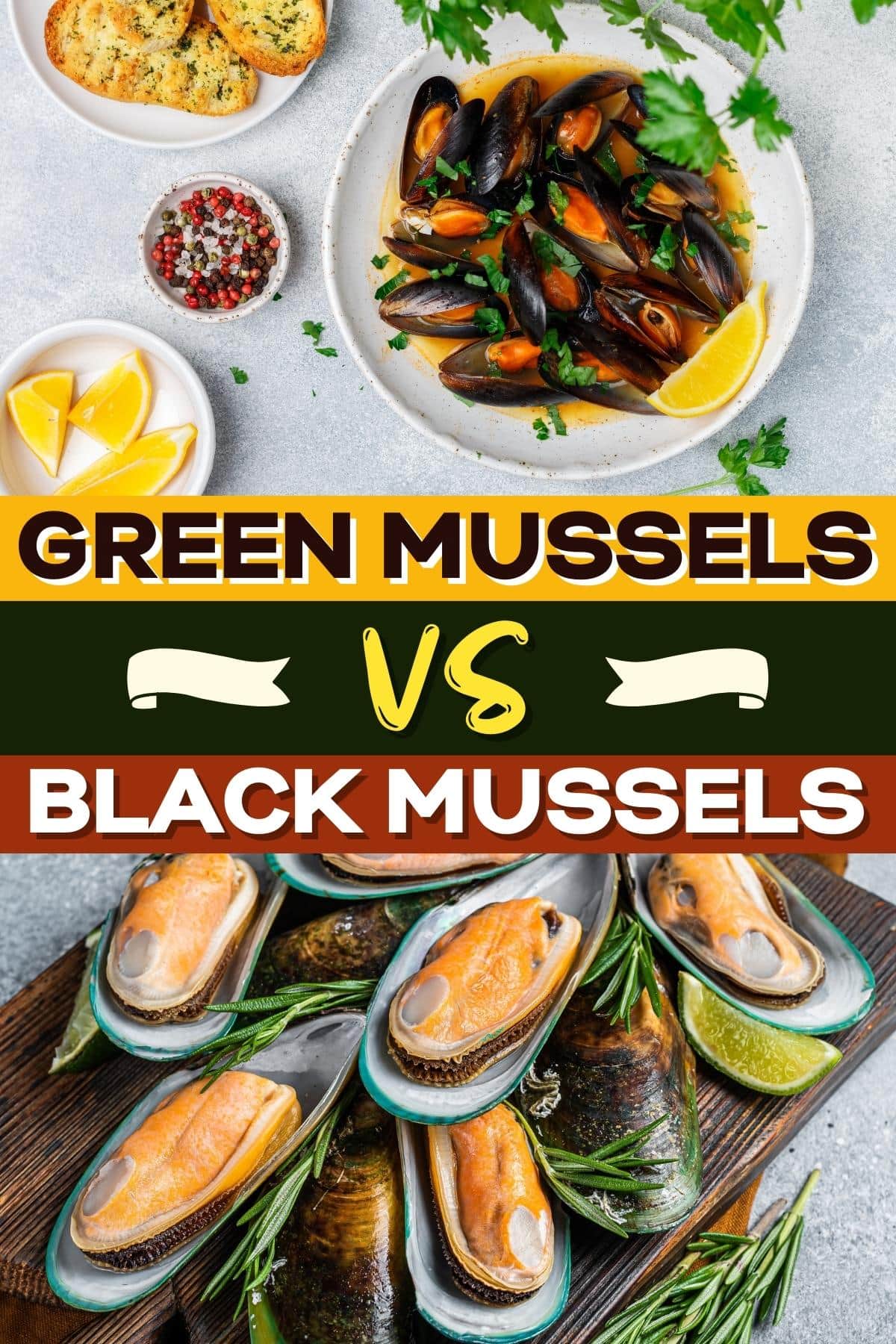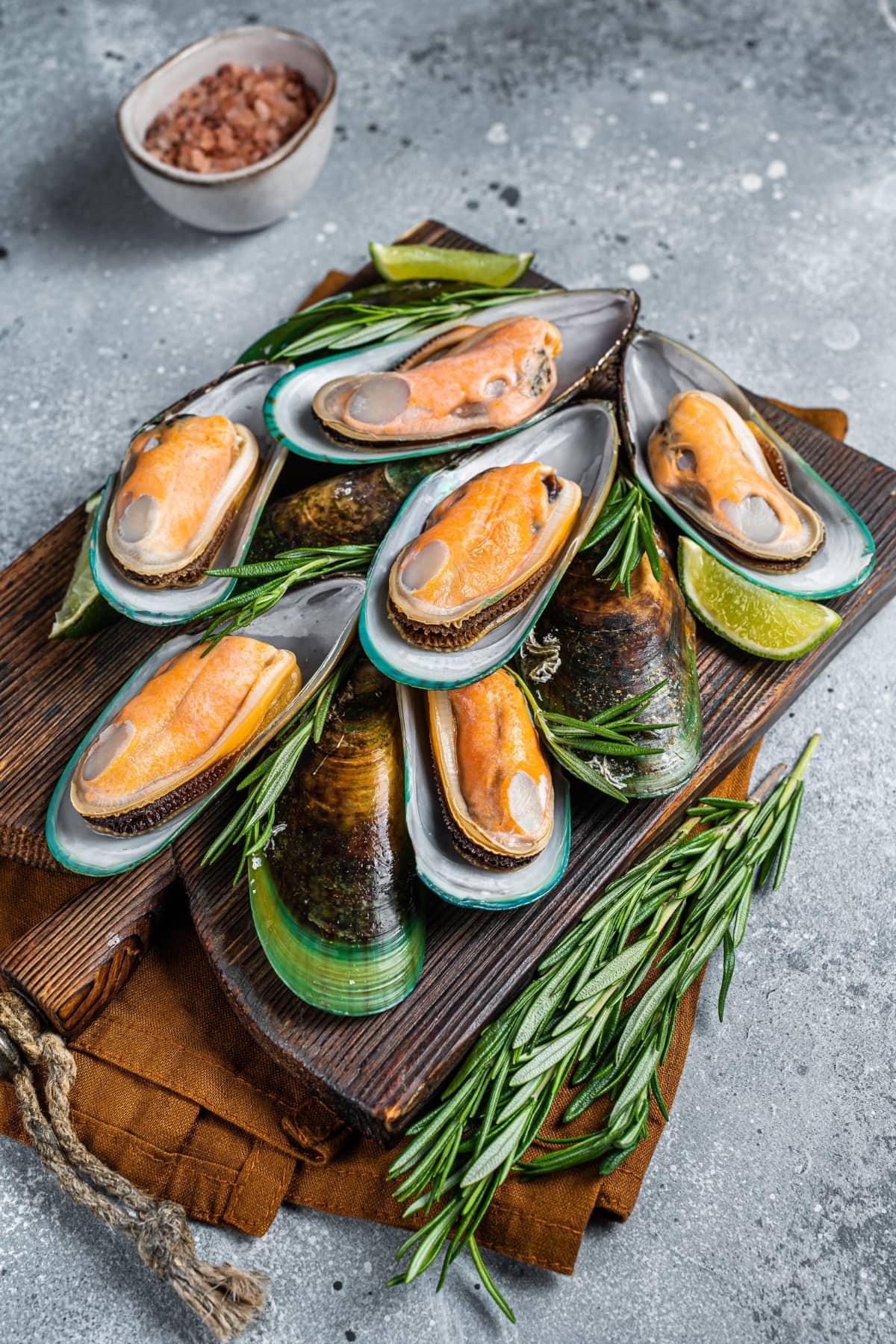Curious about the difference between green mussels vs. black mussels? Dive deep to know what sets these mollusks apart.
Green and black mussels mainly differ in taste, texture, appearance, cost, availability, and recipe use.
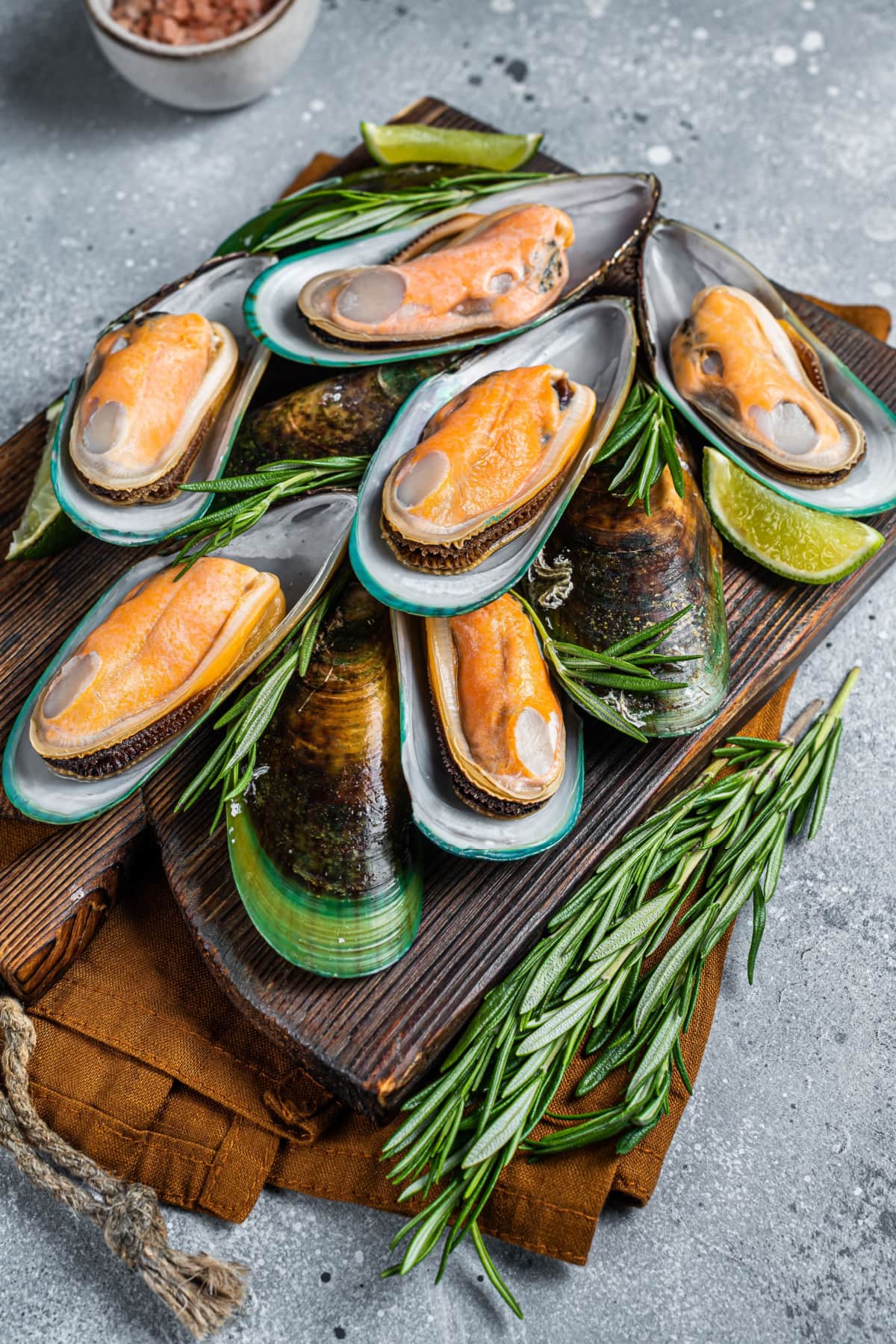
But which one truly captivates the palate? Is it all about personal taste, or do their differences make one variety shine?
If you’re ready to dive into the heart of this shellfish saga, your exploration begins here!
Green Mussels vs. Black Mussels (What’s the Difference?)
What sets these emerald-hued green mussels and alluringly dark black mussels apart? Well, it’s more than just their shell’s color!
Appearance
Green Mussels: These mussels have a vibrant green shell, which can be slightly elongated. Their insides often have a rich orange or yellow hue.
Black Mussels: Black mussels have a dark blue to black shell that is more rounded. Their insides can range from pale to deep orange.
Location
Green Mussels: They’re primarily found in the warm waters of the Indo-Pacific region. This includes countries like New Zealand and parts of Southeast Asia.
They’ve also spread to the coasts of North and South America.
Black Mussels: Black mussels, encompassing various species, are found worldwide.
They also inhabit the cool waters of North America’s Pacific and Atlantic coasts. And they’re found in South Africa and parts of South America.
Taste & Texture
Green Mussels: They have slightly sweeter and plumper meat compared to black mussels. The texture is tender yet meaty.
Black Mussels: These have a brinier, ocean-like flavor with a slightly chewier texture than green mussels.
Availability & Cost
Green Mussels: Because of farming techniques, green mussels are often available year-round in places where they’re cultured.
Green mussels are generally cheap but relatively pricier than black mussels. In regions where they’re imported, they’re more expensive.
Black Mussels: They’re more widely available in markets across Europe and North America due to their broader habitat range.
Their price can vary based on location but are generally more affordable in regions where they’re native.
Shelf Life
Green Mussels: When stored properly in the refrigerator, they can last 3 to 4 days. However, like all shellfish, it’s best to consume them immediately after purchase.
Black Mussels: When stored in the refrigerator, black mussels can remain fresh for 3 days. Again, fresher is always better.
Culinary Uses
Green Mussels: Popular in various Asian dishes, they’re often stir-fried with spices or used in soups and curries. In New Zealand, they’re steamed with white wine and garlic.
Black Mussels: These are a staple in many European dishes. Famous preparations include pasta recipes and seafood stews.
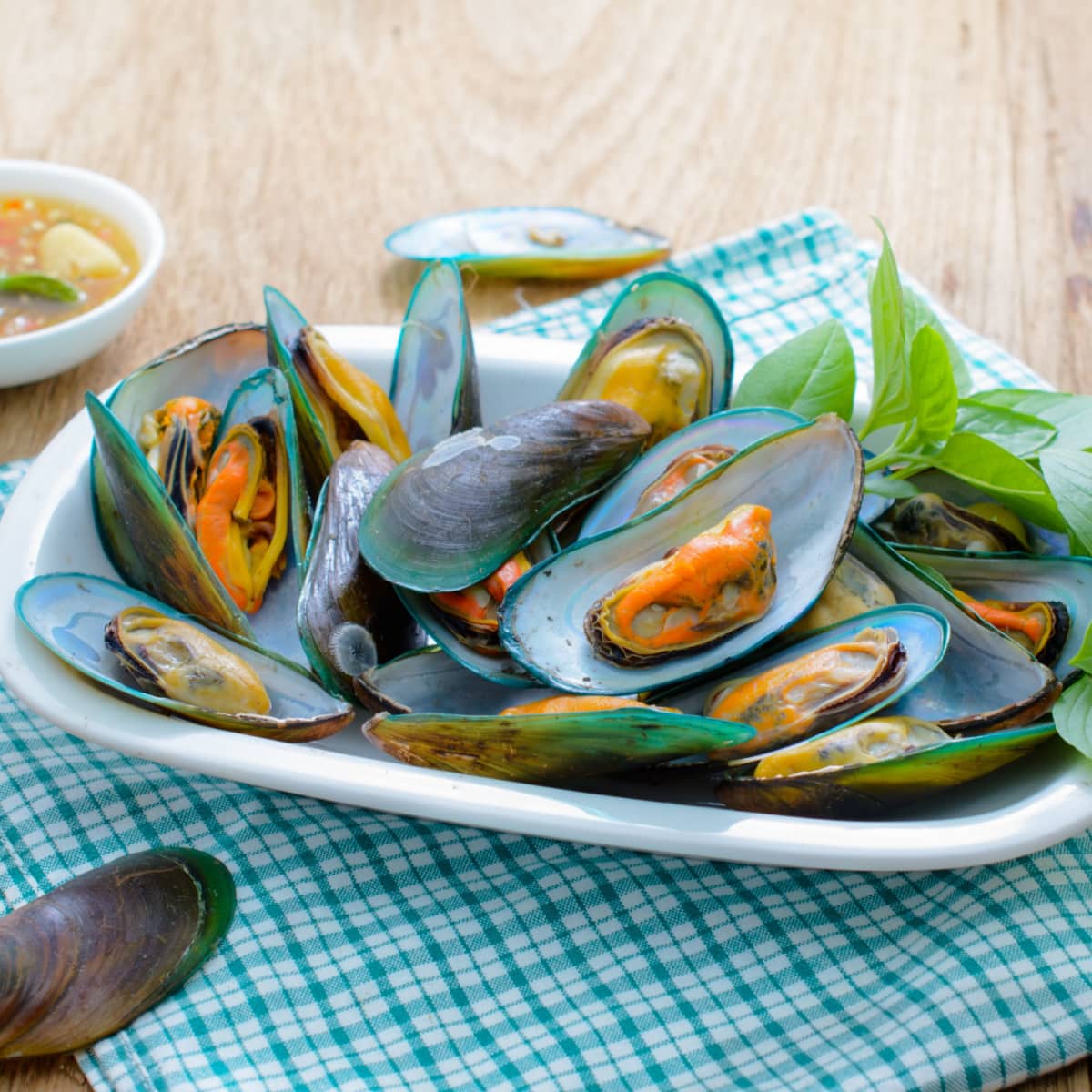
What are Green Mussels?
Green mussels, often called “green-lipped mussels,” are a type of bivalve mollusk.
They’re native to the warm coastal waters of the Indo-Pacific region, especially around New Zealand. Their scientific name is Perna canaliculus.
The name “green-lipped” derives from its stunning appearance. Their shells, with a distinctive green hue around the edges, invite a vibrant seafood experience.
Taste-wise, green mussels offer a slightly sweeter profile than their black-shelled cousins. Their meaty yet tender texture makes them versatile in the kitchen.
How to Cook Green Mussels
But what makes them a favorite among gourmets and home chefs alike? Many mussel recipes make them stars in the kitchen.
- Steamed Green Mussels – Steam green mussels in a broth made with white wine, garlic, shallots, and a touch of butter. Serve them with crusty bread for dipping.
- Green Mussel Soup – Create a hearty soup by simmering green mussels in a flavorful broth with vegetables and herbs.
- Green Mussel Stir-Fry – Stir-fry green mussels with colorful vegetables and rich sauce.
Beyond the Kitchen
But it’s not all about taste. The health buffs among us might know that green mussels are also a powerhouse of nutrients.
Rich in Omega-3 fatty acids, proteins, and essential vitamins, they’re delicious and nourishing.
FUN FACT: While oysters are more famous for producing pearls, some mussels can also make them.

What are Black Mussels?
Black mussels, cloaked in their deep blue to black shells, are a type of edible shellfish.
Break into their shell, and you uncover a tender, orange-hued flesh. These morsels bring a unique, salty essence that can be described as the very taste of the sea.
Their slightly softer texture than their green counterparts makes them ideal for many dishes.
How to Cook Black Mussels
- Moules Marinières – A classic French dish with black mussels cooked in white wine and garlic broth. They’re often served with crispy fries or crusty bread.
- Pasta with Mussels – Combine black mussels with linguine pasta. Serve them with a rich sauce and a sprinkle of fresh herbs.
- Paella with Black Mussels – Incorporate black mussels into a vibrant paella with rice, saffron, chorizo, vegetables, and seafood.
More Than Just Delicious Flavors
Beyond their delectable taste, black mussels are a treasure trove of nutrition.
They contain essential minerals, proteins, and Omega-3 fatty acids. They’re a heart-healthy choice for those seeking both flavor and health benefits.
The sustainability practices associated with mussel farming also make them an eco-friendly seafood option.
FUN FACT: Mussels have a long life span. In the right conditions, some species of mussels can live for up to 60 to 70 years!
Can You Substitute Green Mussels for Black Mussels?
Yes, you can substitute green mussels for black mussels and vice versa in most recipes. However, there are a few considerations to keep in mind:
1. Flavor Profile
Green mussels, especially the green-lipped variety from New Zealand, have a slightly sweeter and plumper meat. Meanwhile, black mussels offer a more salty, ocean-like flavor.
This flavor difference will be subtle or more pronounced depending on the dish.
2. Size
Green mussels tend to be larger than many black mussel varieties. You should adjust cooking times accordingly. Larger mussels will take a bit longer to cook through.
3. Texture
Green mussels are known for their tender yet meaty texture, while black mussels are softer.
This difference might affect the final texture of certain dishes, especially if mussels are the main ingredient.
4. Availability & Cost
Depending on your location, one type of mussels might be more readily available or cost-effective.
NOTE: When substituting one for the other, it’s essential to consider the dish you’re preparing.
The substitution should work seamlessly in many cases, especially in broths, stews, or pasta dishes.
You might notice a difference if the dish relies heavily on distinct flavor or texture. Still, both types offer a delightful seafood experience.
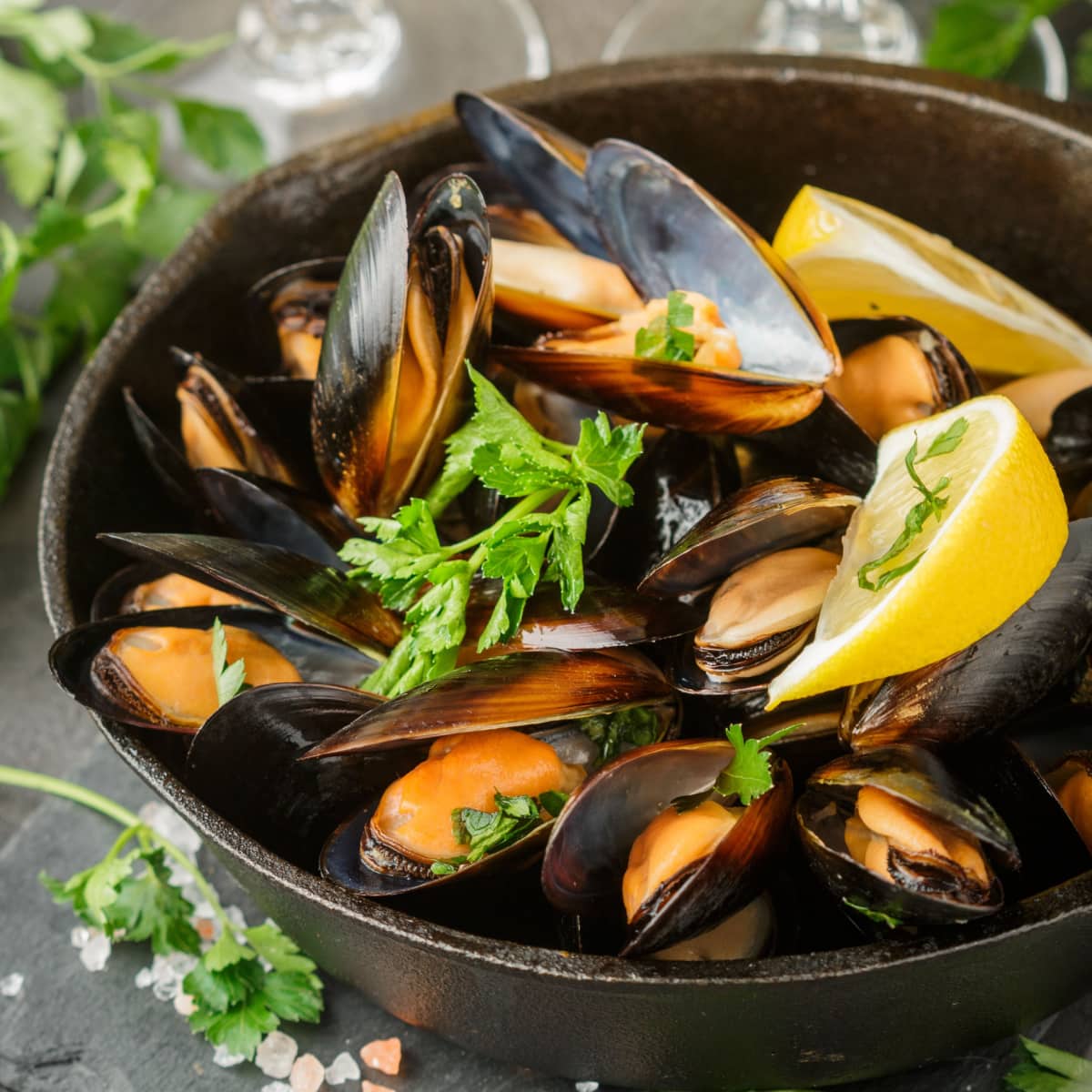
Green Mussels vs. Black Mussels (Which Is Better?)
The “better” choice is subjective when deciding between green and black mussels. It depends on individual taste, culinary context, and local availability.
With their signature sweet and meaty flavor, green mussels are frequently the stars of Asian dishes. They’re the perfect main event for stir-fries and stews.
In contrast, black mussels offer a brinier, oceanic taste and tend to be chewier. They are smaller with dark shells and are staples in European cuisines.
Black mussels found their way into wine-steamed dishes or hearty pasta.
Both types boast impressive nutritional profiles, rich in omega-3s, protein, and minerals.
Ultimately, the choice boils down to personal preference and the specific dish in mind. Both are delectable options, each offering a unique taste of the sea.
